20 years after Lebanon pullout, Hezbollah is itching for another battle

As the anniversary of the IDF’s withdrawal from southern Lebanon approaches, the border between Israel and Lebanon is quiet but tense.
There are no tanks rumbling in the distance, no artillery shells breaking the silence, no screams of the injured or dying. The pastoral, green hills are once again welcoming farmers and hikers rather than IDF troops and Hezbollah militants.
It’s been over 20 years since Israel withdrew from the security belt and more 14 years since the 2006 Second Lebanon War. It’s been a decade of relative quiet along this explosive border with only isolated incidents, and many feel that Israel’s withdrawal from the security belt was the right decision, saving the lives of countless soldiers.
But others say that with the withdrawal, Israel lost its deterrence and gave Hezbollah the ability to grow from a guerilla terror group into a terror army with over 130,000 missiles and rockets, some of them aimed at Israel’s home front. Many others say that the withdrawal propelled Palestinian terrorist groups in the West Bank to launch the bloody Second Intifada after they saw how Hezbollah ousted Israel from Lebanon.
 Location of the first cross-border attack tunnel dug by Hezbollah into a field belonging to the community of Metula (Photo Credit: Anna Ahronheim)
IDF troops first entered Lebanon in 1978 to root out Palestinian terrorists. While it withdrew from most of the country in 1985, Israel kept control of a 1,000 sq. km. security buffer zone 20 km. deep, thinking that the troops there would be able to prevent the terror attacks that plagued the civilians of the North in the 70s and 80s.
Avivim, Misgav Am, Nahariya, Ma’alot, Kiryat Shmona. Israel’s North is full of memorial sites to victims of terror attacks carried out by Palestinian terrorists who infiltrated from Lebanon before 1982.
Hezbollah first emerged during Lebanon’s civil war, which broke out in 1975. With long-simmering discontent between the various sectarian communities vying for control, a group of Shi’ites influenced by Iran began to carry out attacks against Israeli troops, its ally the South Lebanon Army (SLA) and rival Shi’ite militias.
With the financial help of Iran and its Islamic Revolutionary Guard Corps (IRGC) which began training the militia group, it earned a reputation for its violence and attacks against foreign targets – like the 1983 Beirut barrack attack which killed more than 300 people. Two years later the group, which called itself Hezbollah – “Party of God” – officially announced its establishment and called for an armed struggle to end the Israeli occupation of Muslim lands.
Location of the first cross-border attack tunnel dug by Hezbollah into a field belonging to the community of Metula (Photo Credit: Anna Ahronheim)
IDF troops first entered Lebanon in 1978 to root out Palestinian terrorists. While it withdrew from most of the country in 1985, Israel kept control of a 1,000 sq. km. security buffer zone 20 km. deep, thinking that the troops there would be able to prevent the terror attacks that plagued the civilians of the North in the 70s and 80s.
Avivim, Misgav Am, Nahariya, Ma’alot, Kiryat Shmona. Israel’s North is full of memorial sites to victims of terror attacks carried out by Palestinian terrorists who infiltrated from Lebanon before 1982.
Hezbollah first emerged during Lebanon’s civil war, which broke out in 1975. With long-simmering discontent between the various sectarian communities vying for control, a group of Shi’ites influenced by Iran began to carry out attacks against Israeli troops, its ally the South Lebanon Army (SLA) and rival Shi’ite militias.
With the financial help of Iran and its Islamic Revolutionary Guard Corps (IRGC) which began training the militia group, it earned a reputation for its violence and attacks against foreign targets – like the 1983 Beirut barrack attack which killed more than 300 people. Two years later the group, which called itself Hezbollah – “Party of God” – officially announced its establishment and called for an armed struggle to end the Israeli occupation of Muslim lands.
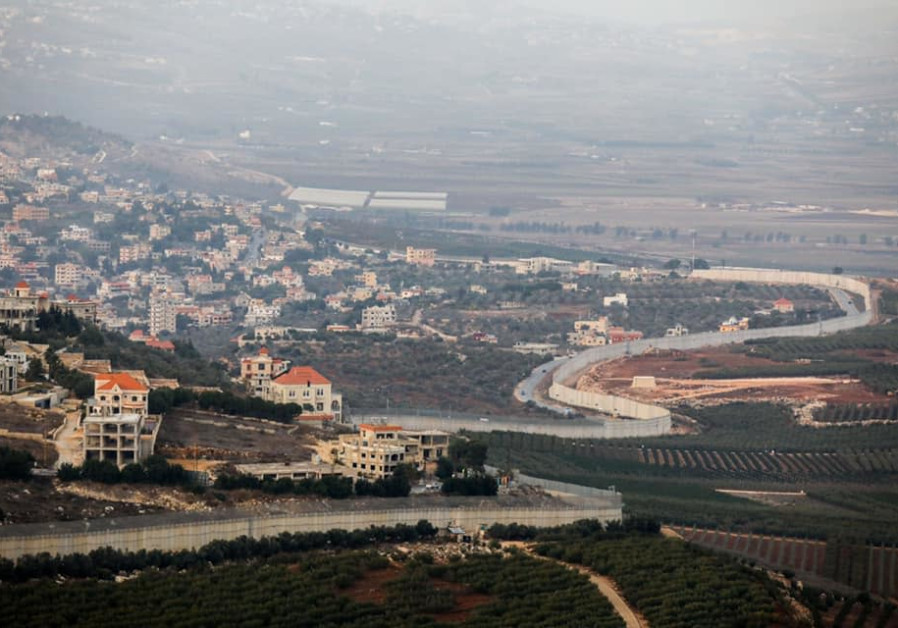 View of the Israel-Lebanon border (Photo Credit: Marc Israel Sellem/The Jerusalem Post)
View of the Israel-Lebanon border (Photo Credit: Marc Israel Sellem/The Jerusalem Post)
WHILE HEZBOLLAH, then a guerrilla terror group, was not as strong or organized as it is today, it knew the lay of the land and was able to build up its firepower, using snipers, rockets and other arms against IDF troops. Dozens of attacks took place during the years Israel occupied south Lebanon, a period of time that the Jewish state has yet to officially recognize as a war.
Though official numbers put IDF casualties at 256, with roughly two dozen soldiers killed per year, the unofficial number stands at 675.
Two decades after it “ended,” the forgotten, nameless war has once again grabbed headlines and made its way into public awareness. Men who served there are telling their stories, opening up old wounds on Facebook pages and other social media outlets. The Defense Ministry is also considering giving the former soldiers who spent time in southern Lebanon between 1982-2000 medals.
“There was a sort of cognitive dissonance regarding the withdrawal,” Lt.-Col. (Ret.) Sarit Zehavi told The Jerusalem Post. She is the head of Alma, an organization that gives briefings on Israel’s security challenges on the northern border.
“On the one hand, there was a lot of anger directed against Four Mothers [an anti-war movement which led the calls for withdrawal from Lebanon, but to see the pictures of soldiers leaving Lebanon made many people really happy,” she said as we drove along the border.
While Zehavi was not serving in the IDF during the withdrawal, she refers to herself and her peers as “the generation of Lebanon,” saying that the open wounds from the 15 years spent there have not disappeared for the troops who lost friends on an almost daily basis.
“I remember friends who when they were drafted, only wanted to serve in Lebanon. It’s my friends who were killed there,” she said, adding that “the soldiers who draft today are the children [of those] who served in Lebanon. We took their fathers out, but it’s not over.”
Even when Israel left southern Lebanon, Hezbollah continued to carry out attacks targeting IDF troops. In 2006, one such attack sparked the 34-day Second Lebanon War, during which Israel lost 121 soldiers and 43 civilians.
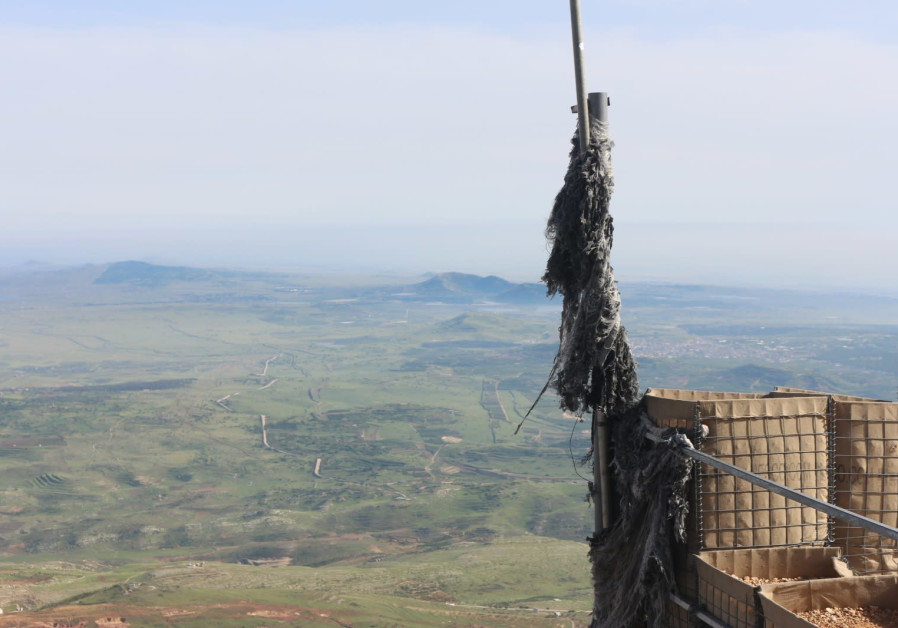 Overlooking southern Syria from the IDF's military post on Mount Hermon (Photo Credit: Anna Ahronheim)
MANY SENIOR IDF officers say that Hezbollah is not interested in another war right now – not only because of internal issues and their ongoing role in Syria, but because they know about the IDF’s increased capabilities and intelligence superiority.
The commander of the IDF’s Kfir Brigade, Col. Eran Oliel, first entered Lebanon a month after he was drafted into the IDF’s 101st Paratrooper’s Battalion in 1996, spending two years as a platoon leader and company commander.
He told the Post in a recent interview that until a peace treaty is signed with Lebanon, “the threat is there.” Hezbollah, he clarified, “does not represent Lebanon. When they prepare an attack, they don’t ask permission from Beirut. I believe that the price Hezbollah knows that it will pay if it attacks Israel is what’s making them think twice or even five times before they try anything.”
But others warn that the terror group is itching for another battle.
“They want war,” said one officer who has been stationed along the border with Lebanon for several years. “They gained a lot of experience in Syria and now they have returned to the border area because they are preparing for war with Israel.”
According to him, armed Hezbollah operatives used to come to the border in uniforms until 2006. Following the Second Lebanon War – and the imposition of UN Security Council Resolution 1701 which tasked the United Nations Interim Force in Lebanon (UNIFIL) with patrolling southern Lebanon – Hezbollah operatives backed off from approaching the border.
Until three years ago.
Now, the officer said, Hezbollah operatives in civilian clothing are back doing active operations along the border, albeit with masks because of the continued spread of the coronavirus.
And not only have Hezbollah operatives in civilian clothing been identified moving around freely along the border, but they are also being seen more and more often with Lebanese Armed Forces (LAF).
Many of the group’s capabilities and infrastructure are intertwined with the civilian infrastructure of Lebanon, a country that receives millions of dollars in military aid and equipment from the United States and other Western countries.
But even despite all the aid, the LAF is not as strong as Hezbollah. But it will nonetheless take part in the next war against Israel, Zehavi said, explaining that “they can’t be seen running away from a war with Israel, leaving all the work to Hezbollah.”
The artificial distinction between Hezbollah and the Lebanese state has been erased, and politicians and senior IDF officers have threatened to send Lebanon “back to the Stone Age” should another war break out.
And the next war will be no walk in the park.
Overlooking southern Syria from the IDF's military post on Mount Hermon (Photo Credit: Anna Ahronheim)
MANY SENIOR IDF officers say that Hezbollah is not interested in another war right now – not only because of internal issues and their ongoing role in Syria, but because they know about the IDF’s increased capabilities and intelligence superiority.
The commander of the IDF’s Kfir Brigade, Col. Eran Oliel, first entered Lebanon a month after he was drafted into the IDF’s 101st Paratrooper’s Battalion in 1996, spending two years as a platoon leader and company commander.
He told the Post in a recent interview that until a peace treaty is signed with Lebanon, “the threat is there.” Hezbollah, he clarified, “does not represent Lebanon. When they prepare an attack, they don’t ask permission from Beirut. I believe that the price Hezbollah knows that it will pay if it attacks Israel is what’s making them think twice or even five times before they try anything.”
But others warn that the terror group is itching for another battle.
“They want war,” said one officer who has been stationed along the border with Lebanon for several years. “They gained a lot of experience in Syria and now they have returned to the border area because they are preparing for war with Israel.”
According to him, armed Hezbollah operatives used to come to the border in uniforms until 2006. Following the Second Lebanon War – and the imposition of UN Security Council Resolution 1701 which tasked the United Nations Interim Force in Lebanon (UNIFIL) with patrolling southern Lebanon – Hezbollah operatives backed off from approaching the border.
Until three years ago.
Now, the officer said, Hezbollah operatives in civilian clothing are back doing active operations along the border, albeit with masks because of the continued spread of the coronavirus.
And not only have Hezbollah operatives in civilian clothing been identified moving around freely along the border, but they are also being seen more and more often with Lebanese Armed Forces (LAF).
Many of the group’s capabilities and infrastructure are intertwined with the civilian infrastructure of Lebanon, a country that receives millions of dollars in military aid and equipment from the United States and other Western countries.
But even despite all the aid, the LAF is not as strong as Hezbollah. But it will nonetheless take part in the next war against Israel, Zehavi said, explaining that “they can’t be seen running away from a war with Israel, leaving all the work to Hezbollah.”
The artificial distinction between Hezbollah and the Lebanese state has been erased, and politicians and senior IDF officers have threatened to send Lebanon “back to the Stone Age” should another war break out.
And the next war will be no walk in the park.
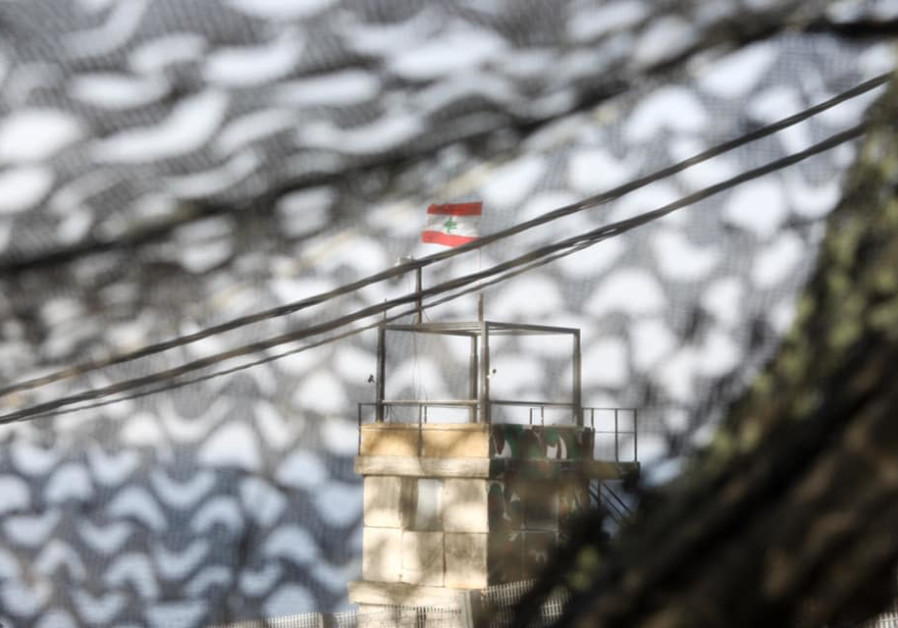 Lebanese watchtower on the border with Lebanon (Photo Credit: Marc Israel Sellem/The Jerusalem Post)
WHILE THE primary threat posed by Hezbollah remains its missile arsenal, the IDF believes that the next war will see the group trying to bring the fight to the home front by infiltrating Israeli communities to inflict significant civilian and military casualties.
“An infiltration by the group in 2020 will see a battalion or brigade’s worth of Hezbollah fighters, not just several people,” Zehavi said. “And the target won’t be a bus or one family, it will be to overtake a community and/or military post and say ‘We are here. What can you do now?’”
In December of last year, the IDF launched Operation Northern Shield to discover and destroy all cross-border tunnels dug by Hezbollah into northern Israel. It said that it has found and destroyed six such tunnels.
But the fact that Israel destroyed their tunnels didn’t stop their plan to “Conquer the Galilee.” There are others that haven’t infiltrated into Israeli territory, and with UNIFIL patrols not given access to many of the sites, there remains the concern that the tunnels may still be operational.
And Hezbollah doesn’t need to go underground to infiltrate into Israel. While the defense establishment has been busy building a border wall and other obstacles along the Lebanese border, the border fence along the majority of the border has been identified for years as vulnerable to infiltrations.
On April 14, a tense standoff between IDF and LAF troops took place along the border fence after Israeli troops crossed into the buffer zone between the two countries to trim trees that, according to a recent report by The Washington Institute, had been planted by the Hezbollah affiliated Lebanese NGO Green Without Borders to obscure cameras placed on the Israeli side of the border fence.
The tense standoff near the Israeli town of Metulla was brought to an end by UNIFIL peacekeepers, who also trimmed the trees themselves.
Three days later – and following an airstrike blamed on Israel targeting a Jeep in Syria believed to belong to Hezbollah – IDF troops discovered three breaches along the security fence near the communities of Avivim, Yiftah and Metulla.
A ground invasion by the Iranian-backed group is of real concern for Israel, which expects to evacuate dozens of communities that sit along the border with Lebanon.
Lebanese watchtower on the border with Lebanon (Photo Credit: Marc Israel Sellem/The Jerusalem Post)
WHILE THE primary threat posed by Hezbollah remains its missile arsenal, the IDF believes that the next war will see the group trying to bring the fight to the home front by infiltrating Israeli communities to inflict significant civilian and military casualties.
“An infiltration by the group in 2020 will see a battalion or brigade’s worth of Hezbollah fighters, not just several people,” Zehavi said. “And the target won’t be a bus or one family, it will be to overtake a community and/or military post and say ‘We are here. What can you do now?’”
In December of last year, the IDF launched Operation Northern Shield to discover and destroy all cross-border tunnels dug by Hezbollah into northern Israel. It said that it has found and destroyed six such tunnels.
But the fact that Israel destroyed their tunnels didn’t stop their plan to “Conquer the Galilee.” There are others that haven’t infiltrated into Israeli territory, and with UNIFIL patrols not given access to many of the sites, there remains the concern that the tunnels may still be operational.
And Hezbollah doesn’t need to go underground to infiltrate into Israel. While the defense establishment has been busy building a border wall and other obstacles along the Lebanese border, the border fence along the majority of the border has been identified for years as vulnerable to infiltrations.
On April 14, a tense standoff between IDF and LAF troops took place along the border fence after Israeli troops crossed into the buffer zone between the two countries to trim trees that, according to a recent report by The Washington Institute, had been planted by the Hezbollah affiliated Lebanese NGO Green Without Borders to obscure cameras placed on the Israeli side of the border fence.
The tense standoff near the Israeli town of Metulla was brought to an end by UNIFIL peacekeepers, who also trimmed the trees themselves.
Three days later – and following an airstrike blamed on Israel targeting a Jeep in Syria believed to belong to Hezbollah – IDF troops discovered three breaches along the security fence near the communities of Avivim, Yiftah and Metulla.
A ground invasion by the Iranian-backed group is of real concern for Israel, which expects to evacuate dozens of communities that sit along the border with Lebanon.
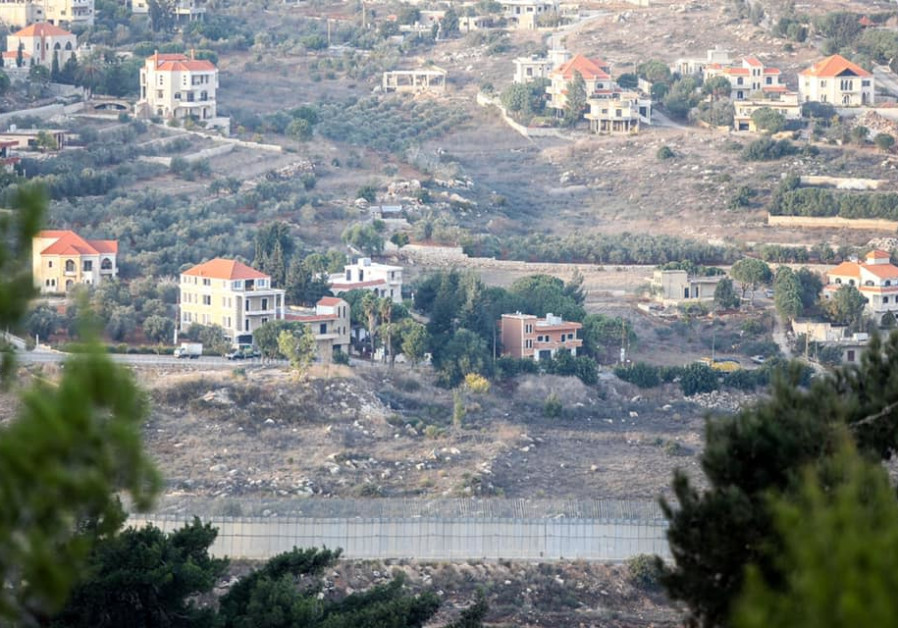 View onto the Lebanese side of the border with Israel (Photo Credit: Marc Israel Sellem/The Jerusalem Post))
HEZBOLLAH HAS gained immeasurable battlefield experience from its time in Syria, learning not only from its Iranian patrons but from Russian forces in the war-torn country as well.
Despite the civil war winding down, Hezbollah has been investing significant amounts of manpower and time in Syria and has been reported to be embedding itself into the Syrian Arab Army (SAA) as well as villages and towns countrywide, in order to guarantee its survival in the country.
Military success in Syria has also allowed Hezbollah to redeploy senior operatives and troops to the area as well as back to southern Lebanon. The group’s leader Hassan Nasrallah has said as much himself.
Last year, the IDF’s Northern Command cleared for release that the group has been active in the Syrian Golan Heights in a clandestine file known as the “Golan Project,” where operatives involved have weaponry available to attack Israeli troops when given the order.
A senior officer stationed along the border with Syria took the author to the IDF’s military posts along Mount Hermon. Pointing out various villages along the border, the officer said that the military has identified several locations where they know the Lebanese terror group collects intelligence on Israel.
The IDF is on a higher level of alertness because of the Golan Project, he said.
In addition, according to foreign reports, Israel provided light weaponry to rebel groups over the years of Operation Good Neighbor, which has led to concerns that they may one day be turned over to Israel’s enemies.
But the next war in the North will not be limited to one border, but will include Syria as well.
View onto the Lebanese side of the border with Israel (Photo Credit: Marc Israel Sellem/The Jerusalem Post))
HEZBOLLAH HAS gained immeasurable battlefield experience from its time in Syria, learning not only from its Iranian patrons but from Russian forces in the war-torn country as well.
Despite the civil war winding down, Hezbollah has been investing significant amounts of manpower and time in Syria and has been reported to be embedding itself into the Syrian Arab Army (SAA) as well as villages and towns countrywide, in order to guarantee its survival in the country.
Military success in Syria has also allowed Hezbollah to redeploy senior operatives and troops to the area as well as back to southern Lebanon. The group’s leader Hassan Nasrallah has said as much himself.
Last year, the IDF’s Northern Command cleared for release that the group has been active in the Syrian Golan Heights in a clandestine file known as the “Golan Project,” where operatives involved have weaponry available to attack Israeli troops when given the order.
A senior officer stationed along the border with Syria took the author to the IDF’s military posts along Mount Hermon. Pointing out various villages along the border, the officer said that the military has identified several locations where they know the Lebanese terror group collects intelligence on Israel.
The IDF is on a higher level of alertness because of the Golan Project, he said.
In addition, according to foreign reports, Israel provided light weaponry to rebel groups over the years of Operation Good Neighbor, which has led to concerns that they may one day be turned over to Israel’s enemies.
But the next war in the North will not be limited to one border, but will include Syria as well.
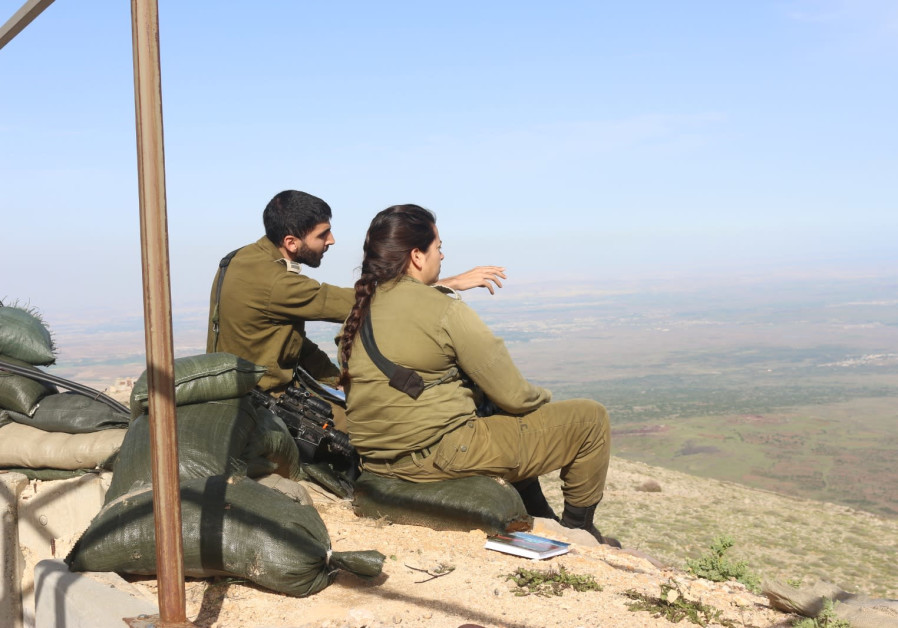 Overlooking southern Syria from the IDF's military post on Mount Hermon (Photo Credit: Anna Ahronheim)
“What happens in Syria happens in Lebanon and vice versa,” said the senior IDF officer stationed along Israel’s border with Syria, explaining that like in Lebanon, Hezbollah operatives in civilian clothes have been seen with SAA troops.
And with the SAA rebuilding its army after close to a decade of a civil war which almost decimated its force, who is to say that it wouldn’t take part in the next war with Israel?
Twenty years after Israel closed the gates with Lebanon, the reality on the ground is that the wars in Israel’s picture-perfect North are far from over. The defense establishment knows that Israel will not be able to escape another war with Hezbollah: It’s just a matter of when.
And when that happens, Zehavi said, “it will be a whole new war, in a whole new world.”
Overlooking southern Syria from the IDF's military post on Mount Hermon (Photo Credit: Anna Ahronheim)
“What happens in Syria happens in Lebanon and vice versa,” said the senior IDF officer stationed along Israel’s border with Syria, explaining that like in Lebanon, Hezbollah operatives in civilian clothes have been seen with SAA troops.
And with the SAA rebuilding its army after close to a decade of a civil war which almost decimated its force, who is to say that it wouldn’t take part in the next war with Israel?
Twenty years after Israel closed the gates with Lebanon, the reality on the ground is that the wars in Israel’s picture-perfect North are far from over. The defense establishment knows that Israel will not be able to escape another war with Hezbollah: It’s just a matter of when.
And when that happens, Zehavi said, “it will be a whole new war, in a whole new world.”
 Location of the first cross-border attack tunnel dug by Hezbollah into a field belonging to the community of Metula (Photo Credit: Anna Ahronheim)
Location of the first cross-border attack tunnel dug by Hezbollah into a field belonging to the community of Metula (Photo Credit: Anna Ahronheim) View of the Israel-Lebanon border (Photo Credit: Marc Israel Sellem/The Jerusalem Post)
View of the Israel-Lebanon border (Photo Credit: Marc Israel Sellem/The Jerusalem Post)WHILE HEZBOLLAH, then a guerrilla terror group, was not as strong or organized as it is today, it knew the lay of the land and was able to build up its firepower, using snipers, rockets and other arms against IDF troops. Dozens of attacks took place during the years Israel occupied south Lebanon, a period of time that the Jewish state has yet to officially recognize as a war.
 Overlooking southern Syria from the IDF's military post on Mount Hermon (Photo Credit: Anna Ahronheim)
Overlooking southern Syria from the IDF's military post on Mount Hermon (Photo Credit: Anna Ahronheim) Lebanese watchtower on the border with Lebanon (Photo Credit: Marc Israel Sellem/The Jerusalem Post)
Lebanese watchtower on the border with Lebanon (Photo Credit: Marc Israel Sellem/The Jerusalem Post) View onto the Lebanese side of the border with Israel (Photo Credit: Marc Israel Sellem/The Jerusalem Post))
View onto the Lebanese side of the border with Israel (Photo Credit: Marc Israel Sellem/The Jerusalem Post)) Overlooking southern Syria from the IDF's military post on Mount Hermon (Photo Credit: Anna Ahronheim)
Overlooking southern Syria from the IDF's military post on Mount Hermon (Photo Credit: Anna Ahronheim)



.jpeg)

Comments
Post a Comment